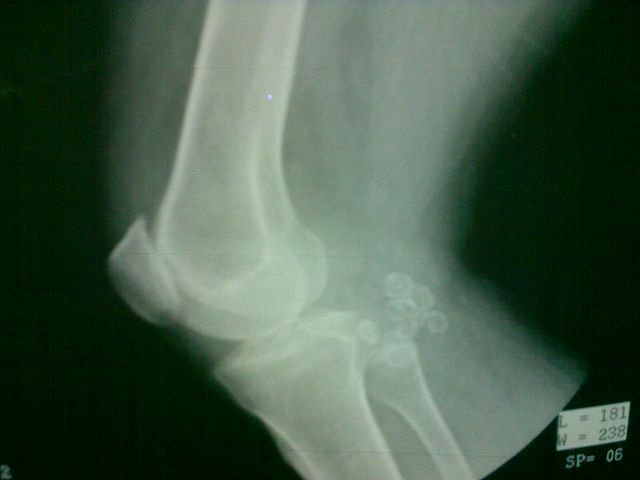29 Nov. 2018. A chemical engineering lab developed a process to help proteins combined with nanoscale polymers penetrate the cartilage in lab rodents and boost treatment for damage caused by osteoarthritis. A team from Massachusetts Institute of Technology describes the process in yesterday’s issue of the journal Science Translational Medicine.
Researchers from the lab of MIT chemical engineering professor Paula Hammond are seeking better treatments for osteoarthritis, a degenerative disorder affecting cartilage in joints. Over time, the wear and tear of joints, mainly in hands, feet, knees, and back gradually hardens and deteriorates cartilage causing pain and inflammation. Joint injuries, like those encountered in sports, and bone deformities can also contribute to osteoarthritis. Data from 2008 cited by the authors show some 27 million people in the U.S. suffer from osteoarthritis, with an annual economic impact of $60 billion.
Most current treatments for osteoarthritis relieve the pain caused by the disease, but do not address the underlying condition. Promising therapies designed to protect or repair the cartilage itself are hampered by the short effective periods of many growth-factor proteins, as well as the inability of the treatments to penetrate the dense cartilage before they’re cleared by the bodies. As a result, these treatments cannot reach the tissue-generating cells known as chondrocytes to repair or regenerate damaged cartilage.
The team of chemical and biomedical engineers from MIT and medical researchers from Brigham and Women’s Hospital in Boston, devised a delivery process for therapeutic growth-factor proteins with a longer effective time period and that penetrate the cartilage. Their solution is combination of growth factors linked together with nanoscale polymer molecules called dendrimers that the researchers hypothesized would have greater lasting power and penetration than growth factors alone.
The dendrimers in this case are derived from polyethylene glycol, a common polymer used in many biological and pharmaceutical applications. The researchers also reversed the electrostatic polarity of the polyethylene glycol dendrimers to help them adhere to and penetrate the cartilage. In lab culture tests, insulin-like growth factor 1 linked to polyethylene glycol dendrimers were able to penetrate samples of cattle cartilage resembling that of humans within 2 days.
The researchers also injected these same growth factor proteins linked to polymer nanocarriers into the knee joints of lab rats induced with osteoarthritis. The results show 10 times the amount of the treatment compound were taken up by the rats’ knee joints and lasted for up to 30 days. When injected surgically into the rats’ knee joints, the polymer nanocarrier treatments reduced cartilage degeneration by 60 percent and arthritic bone deposits by 80 percent compared to untreated joints.
While the results help prove the concept of polymer nanocarrier treatments for osteoarthritis, the researchers are aware their work on therapies for humans is just beginning. “When you start to think about translating this technology from studies in rats to larger animals and someday humans,” says graduate student and first author Brett Geiger in an MIT statement, “the ability of this technology to succeed depends on its ability to work in thicker cartilage.”
Hammond, the study’s senior author and lab director, is founder of the company LayerBio in Medford, Massachusetts. LayerBio is a developer of drug delivery technologies, including polymer formulations for long-term treatments. Geiger and Hammond are also listed as co-inventors on a patent application for the technology filed by MIT.
More from Science & Enterprise:
- Nanotech Immunotherapy Reduces Heart Transplant Rejection
- Protein Delivered with Gold Nanoparticles Helps Fix Muscle Injuries
- Nanoscale Sponges Deliver Rheumatoid Arthritis Treatment
- Nanoparticle Process Designed to Detect, Treat Oral Bacteria
- RNA Nanoparticles Designed for Brain Cancer Therapy
* * *


 RSS - Posts
RSS - Posts
[…] Nanotech Polymers Deliver More Effective Arthritis Therapy […]